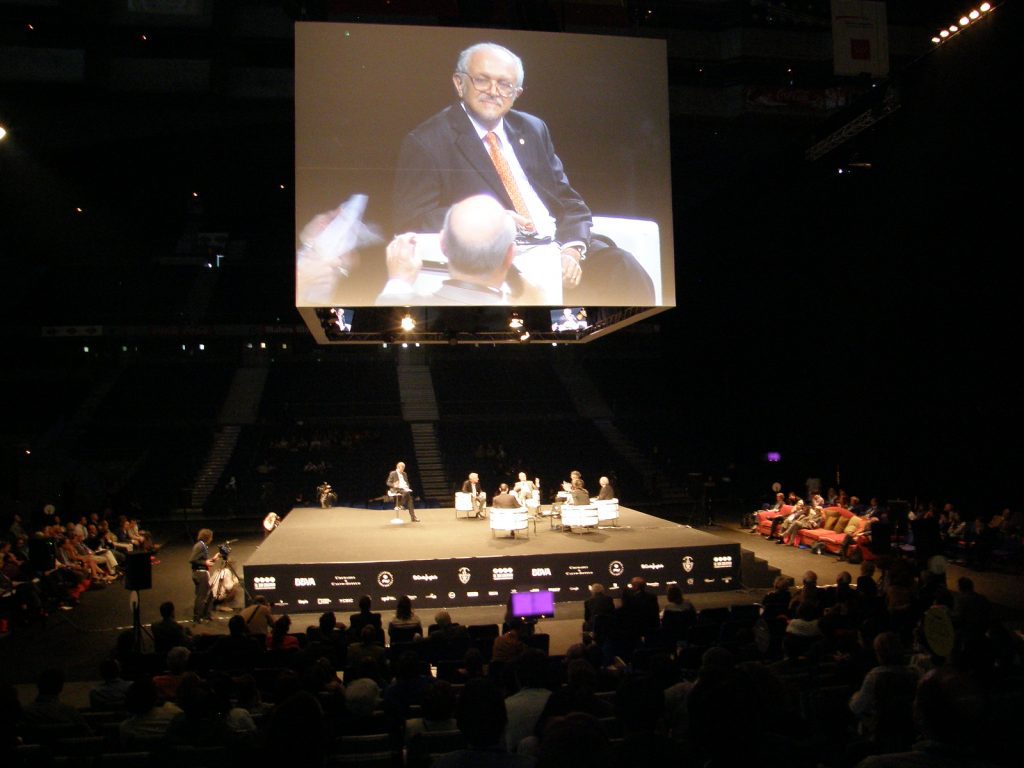Ever heard of Mario Molina? If you’re deep into your chemistry and the people who make leaps and bounds in science and mathematics, it’s likely the name rings a bell. If not, here are some fun facts about Mario Molina to help introduce Mexico’s premier scientist to you. Who knows, you might even learn a thing or two you can keep in mind for a pub quiz!
1. Where it all began…
Mario José Molina-Pasquel Henríquez, to give his full name, was born on March 19, 1943, in Mexico City, Mexico. From an early age, he developed an interest in science and pursued his education in chemistry. This would, of course, serve him well for the decades to come!
2. What did Mario Molina do?
Mario Molina is best known for his groundbreaking work on analyzing the depletion of the ozone layer. In the 1970s, he and Sherwood Rowland found that chlorofluorocarbons (CFCs) were responsible for damaging the ozone layer. It’s Rowland and Molina’s work that helped us understand how negative an effect we’re having on the frozen tips of the planet.
3. He was a Nobel Laureate.
In 1995, Mario Molina became the first scientist born in Mexico to receive a Nobel Prize! He was given the Nobel Prize in Chemistry, with Paul Crutzen and Sherwood Rowland winning alongside.
4. What did Molina teach us about the hole in the Ozone?
Many of us have heard of the Ozone hole, but it is thanks to Molina’s research that we know that CFCs released into the atmosphere were causing the depletion of the ozone layer, particularly over Antarctica – thus, creating the formation of the ozone hole.
5. What was the Montreal Protocol?
Mario Molina’s work also played a crucial role in raising global awareness about ozone layer depletion. It led to the signing of the Montreal Protocol in 1987, an international agreement aimed at phasing out both the production and widespread use of ozone-depleting substances.
6. A busy man!
Mario Molina was also known for having several prestigious positions throughout his career! He worked as a researcher and professor at various institutions, including the University of California, Berkeley, and the Massachusetts Institute of Technology (MIT), inarguably some of the most prestigious schools in the world!
7. He was a fervent environmental activist.
Mario Molina was also a famous advocate for environmental issues. He actively worked to raise awareness about climate change and the importance of protecting the environment – and, frankly, he was in a much better position than most of us when it came to knowing the truth.
8. He was a world-renowned advisor.
Thanks to his sterling reputation and esteemed resume, Mario Molina also served as a scientific advisor to several organizations and governments around the world. He even worked with organizations such as the United Nations!
9. He received the Medal of Freedom.
Thanks to his distinguished work, Mario Molina has earned even more than a Nobel Prize throughout his career! He has received the United States Presidential Medal of Freedom, the Tyler Prize for Environmental Achievement, and the Volvo Environment Prize, among others – meaning his trophy cabinet was pretty full!
10. Molina’s legacy is incredible.
No one can deny that Mario Molina’s work on the ozone layer has had a lasting impact on environmental science and governmental policies. His research and advocacy have contributed to global efforts to protect the ozone layer and address climate change, which is still as important as ever today!
FAQs about Mario Molina
How old is Mario Molina now?
Sadly, Mario Molina is no longer with us. He passed away from a heart attack at the age of 77 in 2020.
Was Mario Molina a doctor?
Yes, Mario Molina was, in fact, a doctor! He completed his doctorate in 1972, though he was best known for his pioneering research into ozone depletion.
How many honourary degrees did Mario Molina have?
Mario Molina had a mind-boggling 29 honourary degrees! And, given all that he did for science and our planet during his lifetime, it is no wonder he was so honoured by so many.
Further reading:
https://facts.uk/tag/Nobel-Peace-Prize
https://sciencehistory.org/education/scientific-biographies/mario-molina/
https://www.nobelprize.org/prizes/chemistry/1995/molina/biographical/
Do you know any fun facts about Mario Molina? Share them in the comments below!
